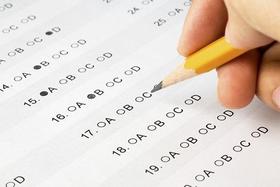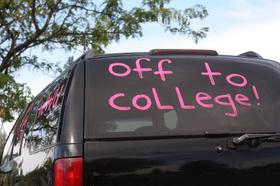School Highlights
MedSpa Careers Institute serves 10 students (100% of students are full-time).
The college's student-teacher ratio of 10:1 is lower than the state community college average of 23:1.
Minority enrollment is 100% of the student body (majority Black and Hispanic), which is less than the state average of 53%.
Quick Facts (2026)
- Enrollment: 10 students
- Private-state tuition: $12,300
- Acceptance Rate: 75%
- Student-teacher ratio: 10:1
- Source: Integrated Postsecondary Education Data System (IPEDS)
Top Rankings
MedSpa Careers Institute ranks among the top 20% of public schools in Virginia for:
Category
Attribute
School Overview
The teacher population of 1 teachers has stayed relatively flat over five years.
MedSpa Careers Institute
(VA) Community College Avg.
Carnegie Classification
Associate's--Private For-profit
Associate's Colleges: Mixed Transfer/Career & Technical-Mixed Traditional/Nontraditional
Institution Level
At least 2 but less than 4 years
At least 2 but less than 4 years
Institution Control
Private, for profit
Public
Total Faculty
1 staff
129 staff
Student Body
The student population of MedSpa Careers Institute has stayed relatively flat over five years.
The student-teacher ratio of 10:1 has stayed the same over five years.
The MedSpa Careers Institute diversity score of 0.00 is less than the state average of 0.71. The school's diversity has declined by 100% over five years.
Total Enrollment
10 students
1,608 students
Student-Teacher Ratio
10:1
23:1
# Full-Time Students
10 students
637 students
# Part-Time Students
n/a
971 students
# Enrollment Undergraduate
n/a
314 students
# Full-Time Undergraduate Students
10 students
611 students
# Full-Time Graduate Students
n/a
158 students
# Part-Time Undergraduate Students
n/a
971 students
# Part-Time Graduate Students
n/a
61 students
Total Dormitory Capacity
n/a
476 students
% American Indian/Alaskan
n/a
n/a
% Asian
n/a
8%
% Hispanic
n/a
13%
% Black
n/a
21%
% White
n/a
47%
% Two or more races
n/a
5%
% Non Resident races
n/a
2%
% Unknown races
100%
4%
Diversity Score
n/a
0.71
College Completion Rate (Students who graduate in less than 4 years) (Year 2010)
42%
25%
College Completion Rate (Students who graduate in 4 years or more than 4 years)
n/a
26%
Average Graduate Earnings (10 Years) (Year 2010)
$33,800
$31,400
Tuition and Acceptance Rate
The private state tuition of $12,300 is less than the state average of $15,536. The private state tuition has grown by 7% over four years.
Private State Tuition Fees
$12,300
$15,536
% Students Receiving Some Financial Aid
53%
75%
Median Debt for Graduates (Year 2010)
$12,581
$8,165
Median Debt for Dropouts (Year 2010)
$4,713
$4,225
Acceptance Rate
75%
75%
Source: 2023 (or latest year available) Integrated Postsecondary Education Data System (IPEDS)
Frequently Asked Questions
How much does MedSpa Careers Institute cost?
MedSpa Careers Institute's private state tuition is approximately $12,300.
What is the acceptance rate of MedSpa Careers Institute?
The acceptance rate of MedSpa Careers Institute is 75%, which is equal to the state average of 75%.
What is MedSpa Careers Institute's ranking?
MedSpa Careers Institute ranks among the top 20% of community college in Virginia for: Average community college minority breakdown.
In what neighborhood is MedSpa Careers Institute located?
MedSpa Careers Institute is located in the North Chesterfield neighborhood of Richmond, VA. There are 1 other community '.college.' located in North Chesterfield.
Recent Articles

Most In-Demand Community College Majors for 2025–26
Explore the most in-demand community college majors for 2025–26 workforce needs, aligned with hiring trends, wages, and transfer pathways.

New Guidebook Helps Students Navigate Community College
A new guidebook offers practical strategies to help students and families succeed in community college, from admissions to transfer and career planning.

Work-Study Opportunities for Spring 2026 Guide
Learn how to secure work-study opportunities for Spring 2026 before classes start, including timelines, tips, and eligibility guidance.





